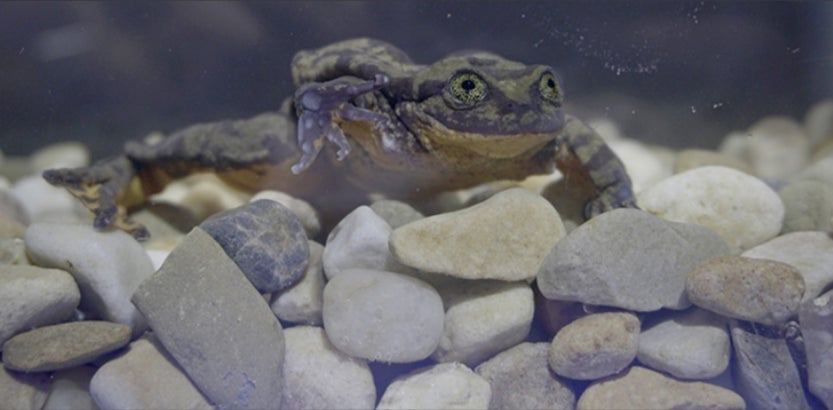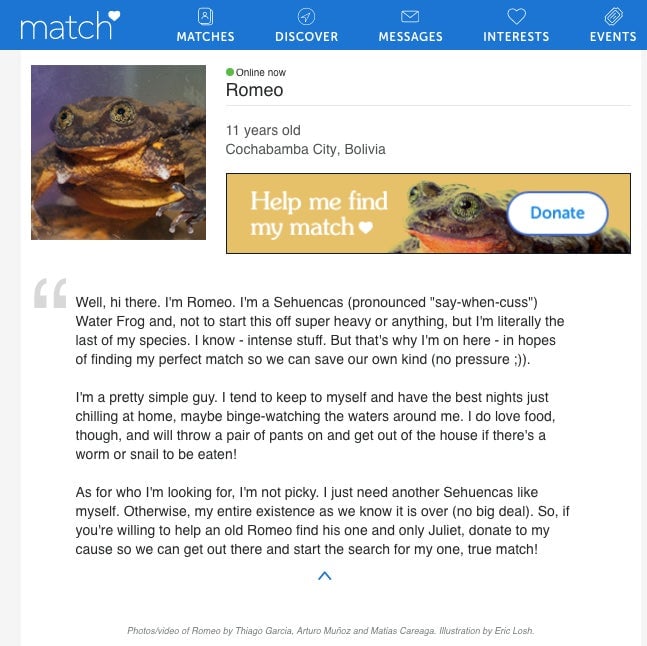Desperate scientists created a Match.com profile for a frog who may be the last of his species
There’s a chance a frog who lives in a tank in a Bolivian museum is the last of his species. But he reportedly hasn’t given up hope, if one can ascribe hope to a frog. The male Sehuencas water frog continues to make mating calls from within his confinement at Bolivia’s Cochabamba Natural History Museum.


There’s a chance a frog who lives in a tank in a Bolivian museum is the last of his species. But he reportedly hasn’t given up hope, if one can ascribe hope to a frog. The male Sehuencas water frog continues to make mating calls from within his confinement at Bolivia’s Cochabamba Natural History Museum.
Conservation biologists haven’t given up hope either. They tend to hate watching species they study go extinct. So a group of local scientists have named him Romeo and created a dating profile for the frog on website Match.com, in hopes of endearing him and his plight to the masses.
“Not to start this off super heavy or anything, but I’m literally the last of my species,” the profile reads.

Match.com is matching donations to fund the effort to scour habitats for Romeo’s mate through Valentine’s day, February 14, 2018.
Scientists are currently searching streams and rivers in Bolivia for a female with whom Romeo can mate, before it’s too late. Sehuencas water frogs normally live around 15 years; the 10-year-old Romeo probably has about another five years to reproduce before he dies.
“We continue to remain hopeful that others are out there so we can establish a conservation breeding programme to save this species,” Arturo Munoz, a conservation scientist, told AFP news.
As the Earth faces what some experts call its “sixth mass extinction,” amphibians, like frogs, are among the most imperiled. Around half of amphibian species (which includes toads, salamanders, frogs, and newts) are reported to be in decline. A third are considered to be threatened with extinction.
Last year, 10,000 critically endangered “scrotum frogs” that lived in Lake Titicaca on the border between Bolivia and Peru died en masse. In the US, federal scientists say the overall amphibian population is shrinking in size by 3.8% every year. That trend has continued since the 1960s, due to a mix of climate change, pesticide applications, and diseases like infectious fungi which can quickly decimate populations.
Frogs seem to be especially vulnerable. Roughly 74% of frog species globally are in decline, and 80% of the frog species that live in India are threatened, a researcher recently told the Hindustan Times.